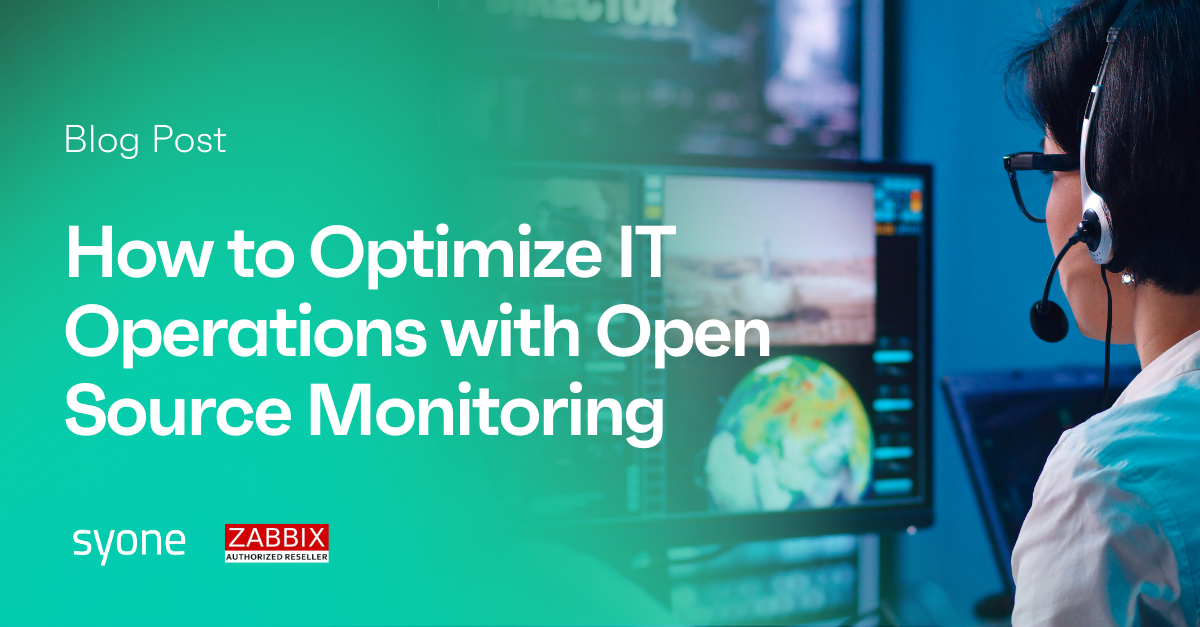Discover how Zabbix offers cost-effective and robust monitoring solutions tailored for the public sector, helping streamline operations and ensure seamless service delivery.
2 min read
Cost-Effective Monitoring Solutions for the Public Sector with Zabbix
By Ana Morais on 23/05/25 16:20
9 min read
Zabbix vs. Traditional Monitoring Tools: A Complete Comparison
By Ana Morais on 23/05/25 16:20
Organizations of every size, across private and public sectors, are increasingly dependent on their infrastructure nowadays. When systems fail, service delivery slows, user experience deteriorates, and costs can spiral.
This makes choosing the right monitoring tool not just a technical decision but a strategic one. Many businesses find themselves evaluating two core options: open source platforms like Zabbix, and traditional commercial monitoring tools. While both aim to deliver visibility and control over complex environments, they do so in very different ways.
This article provides a complete, side-by-side comparison of Zabbix vs. traditional monitoring tools, helping IT professionals and decision-makers understand which is better aligned with their specific needs, priorities, and resources. We’ll also highlight how Syone, the only official Zabbix partner in Portugal, helps organizations unlock the full value of open source monitoring at scale.
9 min read
How to Optimize IT Operations with Open Source Monitoring
By Ana Morais on 23/05/25 16:20
For IT teams, the challenge today isn’t just about maintaining uptime. It’s about doing more with less: less budget, fewer people, and tighter timelines. That’s a tall order, especially when you're managing complex systems spread across physical servers, cloud platforms, containers, and more.
Traditional monitoring tools might promise visibility but often come with high licensing fees, rigid architectures, and limited integration options. It’s no surprise, then, that more and more IT leaders are asking a simple but powerful question: Can we get enterprise-grade monitoring without the enterprise price tag?
The answer is yes. And it starts with open source monitoring solutions like Zabbix.
In this article, we’ll walk you through how to optimize IT operations with open source monitoring, explore the key benefits, show you how to implement it in your environment, and share real-world examples that prove just how impactful it can be.
13 min read
The future of nearshore in Portugal
By Henrique Canha on 23/05/25 16:19
Scandinavian and German companies are being more and more drawn to Portuguese shores, brought by the perfect blend of talent, innovation, and cost-effectiveness. But what is making Portugal so attractive to these Northern European powerhouses?
12 min read
Use Cases for Zabbix in the Public Sector: 5 Real-World Examples
By Ana Morais on 23/05/25 16:15
Public sector organizations are under more pressure than ever to deliver reliable, secure, and efficient digital services. From municipalities managing utilities and transportation to government departments running critical citizen-facing systems, the need for robust IT monitoring is non-negotiable.
Yet, many of these organizations face significant budgetary constraints, legacy infrastructure, and complex regulatory requirements. They need solutions that are cost-effective, adaptable, and scalable, without compromising on visibility or control.
That’s where Zabbix, a powerful open-source monitoring platform, steps in.
With the ability to monitor thousands of endpoints, detect anomalies in real-time, and integrate with a wide range of systems, Zabbix is ideally suited to the public sector’s unique challenges. And when implemented by a trusted partner like Syone - Portugal’s only official Zabbix partner - public organizations benefit from 25 years of experience, deep technical expertise, and a proven track record in open-source transformation.
This article explores five real-world use cases for Zabbix in the public sector, demonstrating how municipalities and government agencies are leveraging open-source monitoring to improve service delivery, ensure uptime, and optimize resource allocation.










